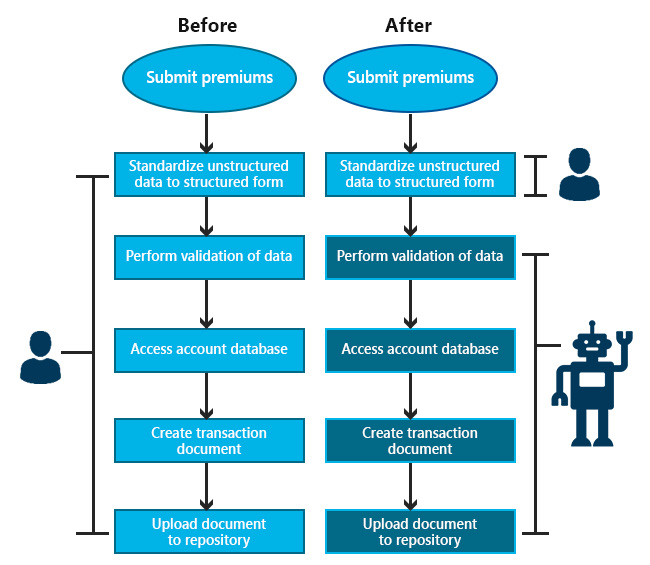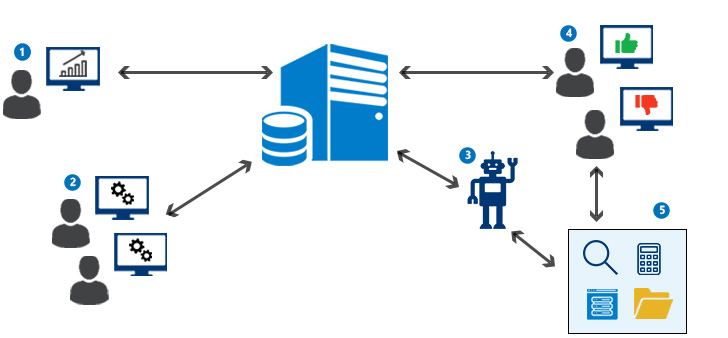Maximizing Your Cybersecurity Learn How to Conduct a Thorough Risk Assessment
As our world becomes more dependent on digital technologies, businesses, regardless of their size or industry, are being confronted with an expanding array of cybersecurity threats. Whether it’s falling prey to phishing schemes or being hit with a crippling ransomware assault, the ramifications of cyber incidents can be catastrophic, leaving lasting financial and reputational damage.
A recent EY report paints a stark picture of the current state of cybersecurity in the banking world. It reveals that despite cybersecurity being deemed the topmost risk facing global banks, around 58% of Chief Risk Officers (CROs) lack the necessary confidence in their defenses against malevolent cyber events. This, in turn, jeopardizes their organization’s ability to effectively combat cyber risks, leaving them vulnerable to potentially catastrophic consequences.
To be on the safer side, it’s essential for businesses to conduct regular cybersecurity risk assessments. In this article, we’ll explore what a cybersecurity risk assessment is and how to conduct one.
What is a cybersecurity risk assessment
A cybersecurity risk assessment is a comprehensive evaluation of an organization’s security position. It involves identifying potential risks and vulnerabilities that could leave the business open to cyber threats, assessing the likelihood of those threats, and determining the potential impact of a breach. The goal of a cybersecurity risk assessment is to provide businesses with a clear picture of their security risks so they can develop a plan to address those risks.
Why is a cybersecurity risk assessment important
The World Economic Forum has recently published a paper that sheds light on the alarming surge in malware and ransomware attacks. The report indicates that malware attacks have increased by a staggering 358%, while ransomware attacks have seen a jaw-dropping spike of 435%.
These figures are a clear indication that cybercrime is on the rise, and businesses must be proactive in their approach to cybersecurity to prevent potentially devastating consequences. The WEF report serves as a reminder that cybersecurity threats are becoming increasingly sophisticated, and organizations must remain vigilant and stay up to date with the latest security measures to safeguard against these threats.
The importance of a cybersecurity risk assessment cannot be misrepresented. According to a survey conducted by EY and IIF, cybersecurity is considered the top risk for the approaching year by 72% of CROs worldwide. Following closely are credit and environmental risks.
With cyber threats becoming increasingly advanced and frequent, it’s essential for businesses to understand their risks and vulnerabilities. A cybersecurity risk assessment can help identify weaknesses in a business’s security stance, enabling them to take proactive steps to mitigate those risks. Additionally, conducting regular cybersecurity risk assessments can help businesses stay compliant with regulations and requirements.
How to conduct a cybersecurity risk assessment
● Identify Assets and Threats
It is the crucial first step in conducting a cybersecurity risk assessment. This involves identifying the key assets that need to be protected, such as databases, networks, and applications, and assessing the potential threats that could compromise these assets.
By identifying the assets and threats, businesses can create a comprehensive inventory of their cybersecurity risks, which is vital for developing an effective mitigation strategy. Furthermore, identifying assets and threats enables organizations to prioritize their cybersecurity efforts by determining which assets are most critical to their operations and which threats pose the greatest risk. Overall, a thorough understanding of the assets and threats is crucial for any successful cybersecurity risk assessment.
● Evaluate Vulnerabilities and Potential Impacts
Once assets and threats have been identified, the next step in a cybersecurity risk assessment is to evaluate vulnerabilities and potential impacts. This involves assessing the weaknesses or vulnerabilities that exist in the systems, processes, or technologies used to protect the assets.
By evaluating these vulnerabilities, businesses can determine the likelihood of a cyber attack and the potential impact it could have on their operations, reputation, and financial health. Evaluating vulnerabilities and potential impacts also help businesses identify areas that need immediate attention and prioritize mitigation strategies. Overall, this step is crucial in developing a comprehensive understanding of the potential risks and developing a plan to address them.
● Determine Likelihood and Risk Level
After identifying the assets and threats and evaluating vulnerabilities and potential impacts, the next step in a cybersecurity risk assessment is to determine the likelihood and risk level of each threat.
This involves assessing the probability of a threat occurring and the potential impact it could have on the organization. By determining the likelihood and risk level, businesses can prioritize their mitigation strategies and allocate resources effectively.
Additionally, this step enables businesses to assess the cost-effectiveness of their mitigation strategies and determine the best course of action for reducing the overall risk level. Overall, determining the likelihood and risk level is a critical step in any effective cybersecurity risk assessment.
● Develop Mitigation Strategies
Developing mitigation strategies is a critical step in a cybersecurity risk assessment, and it involves identifying and implementing measures to reduce the likelihood and potential impact of cyber threats. Mitigation strategies can include a range of technical and non-technical measures, such as implementing access controls, deploying firewalls and antivirus software, and training employees on cybersecurity best practices.
The mitigation strategies must be tailored to the specific risks identified in the risk assessment and be continuously monitored and updated to remain effective. It’s also essential to consider the cost and feasibility of each strategy and ensure that they align with the organization’s risk tolerance and business objectives. Ultimately, developing effective mitigation strategies is crucial for protecting against cyber threats and minimizing the potential impact of any attacks.
● Implement and Monitor Mitigation Strategies
Once the mitigation strategies have been identified and developed, the next step in a cybersecurity risk assessment is to implement and monitor them. This involves deploying the strategies across the organization and ensuring that they are functioning correctly.
It’s important to monitor the effectiveness of the mitigation strategies regularly to identify any weaknesses or gaps that may exist. This enables businesses to adjust their strategies and address any emerging threats proactively. Moreover, businesses must establish an incident response plan to ensure that the organization can respond quickly and efficiently in case of a cyber attack.
Ongoing monitoring and testing of the mitigation strategies are crucial to maintain the organization’s cybersecurity level and ensure that the assets are adequately protected against potential threats. Overall, implementing and monitoring mitigation strategies is a crucial step in any effective cybersecurity risk assessment.
How your organization can benefit by conducting a cybersecurity risk assessment
1. Improved cybersecurity levels: Conducting a cybersecurity risk assessment helps businesses identify potential risks and vulnerabilities, enabling them to develop effective mitigation strategies and ultimately improving their overall cybersecurity posture.
2. Reduced risks and vulnerabilities: By identifying and addressing potential risks and vulnerabilities, businesses can significantly reduce the likelihood of a cyber attack.
3. Protection against cyber threats: Developing effective mitigation strategies and implementing them helps businesses protect their assets against potential cyber threats, ensuring continuity of operations.
4. Compliance with regulations: Conducting a cybersecurity risk assessment helps businesses meet regulatory and compliance requirements.
5. Increased stakeholder confidence: Demonstrating a proactive approach to cybersecurity through a risk assessment can increase stakeholder confidence in the organization’s ability to protect sensitive information.
6. Cost savings: Identifying and addressing potential risks and vulnerabilities proactively can help businesses avoid costly data breaches and other cyber incidents, ultimately leading to cost savings.
7. Improved decision-making: Conducting a risk assessment provides valuable insights into the organization’s cybersecurity stance, enabling informed decision-making around cybersecurity investments and resource allocation.
8. Competitive advantage: A robust cybersecurity posture can be a competitive advantage, particularly for businesses operating in industries with high cybersecurity risks.
9. Protection of reputation: A successful cyber attack can cause significant reputational damage to businesses, whereas a strong cybersecurity stance can protect against such damage.
10. A proactive approach to cybersecurity: Conducting a cybersecurity risk assessment demonstrates a proactive approach to cybersecurity, which can foster a culture of security within the organization and promote a heightened sense of awareness among employees.
Conclusion
Conducting a cybersecurity risk assessment is crucial for any business that wants to protect itself from the ever-increasing risks of cyber threats. By identifying assets and threats, evaluating vulnerabilities and potential impacts, determining the likelihood and risk level, developing mitigation strategies, and implementing and monitoring those strategies, businesses can develop a comprehensive understanding of their security risks and take proactive steps to address them.
Regular cybersecurity risk assessments also help organizations stay compliant with regulations and requirements. Ultimately, the benefits of conducting a cybersecurity risk assessment are numerous, including safeguarding the business’s operations, reputation, and financial health against potentially catastrophic consequences of cyber incidents. Therefore, every business should prioritize conducting regular cybersecurity risk assessments to stay ahead of the evolving cyber threats landscape.
Protect your business from cyber threats. Conduct a cybersecurity risk assessment now. Contact us to identify risks, vulnerabilities and develop mitigation strategies to keep your business secure. Stay compliant and ahead of the threat landscape. Don’t wait, schedule a consultation today.






